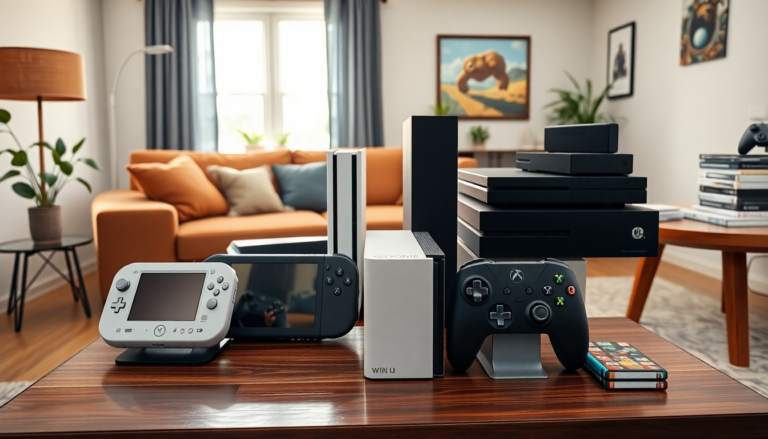Argomenti trattati
Introduction to the eighth generation of consoles
The eighth generation of video game consoles, which commenced in 2012, marks a pivotal moment in gaming history. This generation includes prominent systems such as the Wii U, PlayStation 4, Xbox One, and Nintendo Switch. Each of these consoles brought unique features and innovations, reflecting the industry’s ongoing evolution and adaptation to consumer demands.
Major players in the eighth generation
Among the main contenders, the Wii U debuted in 2012, aiming to enhance the Wii experience but ultimately falling short of expectations. Despite its innovative GamePad, which featured a touchscreen, the Wii U managed to sell only about 13.5 million units by its discontinuation in 2017. This led Nintendo to pivot towards the more successful Nintendo Switch, released in 2017, which combined handheld and home console gaming in a versatile package that appealed to a broader audience.
In contrast, Sony’s PlayStation 4 and Microsoft’s Xbox One, both released in 2013, built upon their predecessors’ foundations, offering enhanced graphical fidelity and processing power. The PS4, in particular, became known for its robust library of exclusive titles and strong support for digital gaming. By September 2023, the PS4 had sold around 117 million units, while the Xbox One family followed with approximately 58 million units sold.
Technological advancements
While the eighth generation did not introduce groundbreaking hardware innovations, it focused on refining existing technologies. Both Sony and Microsoft embraced a games-as-a-service model, enhancing their consoles’ capabilities for digital distribution. The mid-generation refreshes, such as the PlayStation 4 Pro and Xbox One X, showcased 4K gaming and improved performance, indicating a trend towards higher fidelity gaming experiences.
Moreover, the introduction of cloud gaming services like PlayStation Now and xCloud marked a significant shift in how gamers accessed their favorite titles, allowing for a more flexible gaming experience that transcended traditional console limitations.
Nintendo’s unique approach
Nintendo’s strategy diverged significantly from that of its competitors during this generation. The Wii U’s marketing missteps highlighted the need for a clear vision, leading to the creation of the Switch, which redefined the gaming experience. Utilizing industry-standard components and a flexible design, the Switch successfully attracted both casual and hardcore gamers alike, achieving over 125 million units sold by March 2023. This adaptability paved the way for Nintendo to thrive in an increasingly competitive landscape.
The impact of mobile gaming
Throughout the eighth generation, gaming on mobile devices gained immense traction, challenging the traditional console market. The rise of smartphones and tablets attracted a new audience, often overshadowing dedicated handheld consoles like the Nintendo 3DS and PlayStation Vita. While the 3DS sold approximately 75 million units, the Vita struggled, with sales estimated at around 10 million before its discontinuation in 2019.
This competitive pressure forced console manufacturers to rethink their strategies, leading to a greater emphasis on mobile compatibility and cross-platform gaming. The persistence of the free-to-play model and the integration of social features into gaming further reflected this shift towards a more interconnected gaming ecosystem.
Conclusion of the eighth generation
As the eighth generation of consoles transitioned into the next, marked by the release of the PlayStation 5 and Xbox Series X/S in late 2020, the industry continued to evolve in response to emerging technologies and consumer preferences. The groundwork laid during this generation has set the stage for what lies ahead, ensuring that gaming remains a dynamic and ever-changing landscape.

